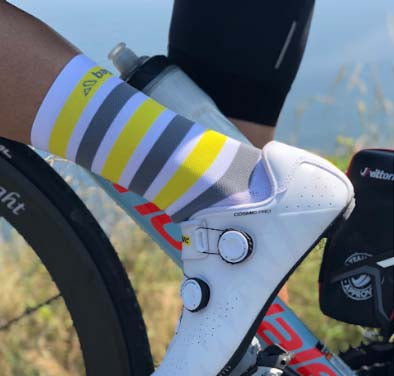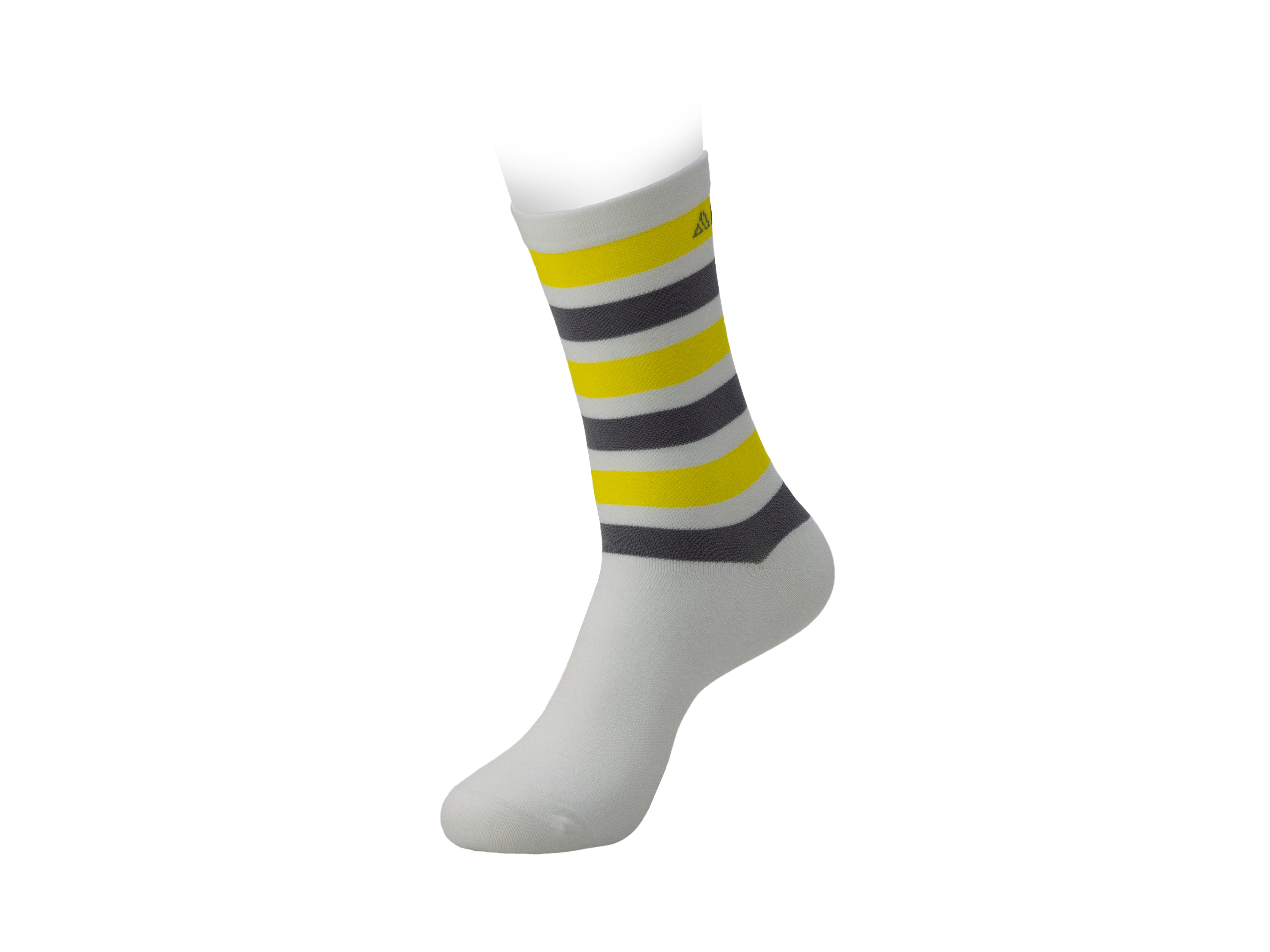Disc or caliper brakes?
 Disc brake vs. caliper brake. Source: Brújula Bike.[/caption]
Disc brake vs. caliper brake. Source: Brújula Bike.[/caption]
Who do you love more, Mom or Dad? Left or right? Nike or Adidas? And if you're also a cyclist... disc brakes or caliper brakes?
This question is a classic among road cycling enthusiasts, a topic that has been polarized in recent years by the impressive advance of disc brakes on bikes thanks to continuous development and mass marketing by brands in the sector. Thus, it has earned its loyal followers—and no fewer detractors—in a kind of "fratricidal war" between amateurs, professionals, and manufacturers. Nostalgia for the classics leans toward the classic brake, while the most avant-garde embraces modern disc brakes. Where do you stand?
For now, disc brakes aren't the norm in the 2020 Tour de France peloton, with top cyclists like Egan Bernal, Primoz Roglic, and Tom Dumoulin avoiding them, while others are forced to use them by their team's supplier.
[caption id="attachment_10283" align="aligncenter" width="1024"] A large number of pros have used it on the 2020 Tour. Source: GruberImages[/caption]
A large number of pros have used it on the 2020 Tour. Source: GruberImages[/caption]
Disc brake: background
Although its use is widespread and established in the MTB world (where there's no doubt about its effectiveness compared to previous models), road cycling has been going through its own period of adaptation and awareness of this new reality over the last five years. It's true, and it must be said, that the cycling industry—like many others—relies on continuous product developments, sometimes with noticeable improvements for the user and other times with facelifts and makeovers, the sole objective of increasing revenue.
The first records of disc brakes date back to the 1950s, with crude prototypes that failed to achieve success. In the 1970s, Shimano introduced them to urban touring bikes, achieving a slightly larger market share but nowhere near the widespread reach they have today. It wasn't until the late 1990s that they began to be used in the world of MTB, specifically in downhill , and later, with the appearance of the Shimano XT groupset, they began to expand into mountain bikes, becoming more widespread and developed in parallel with this type of cycling.
Before these, there were spoon, rod, and rear-wheel setback models (currently in fashion with fixed-gear fixies ), as well as a series of very curious failed projects of all kinds that have fortunately remained in the trunk of memories.
In favor of disc brakes
- They have greater braking power and speed than traditional brakes (also called calipers ), specifically they are 40% faster.
- In weather conditions such as rain or humidity (something quite common in different latitudes across the globe), disc brakes will perform with almost complete reliability, regardless of these external factors. And that translates into safety, something very important for cyclists. Something that caliper brakes can't guarantee with such reliability.
- In downhill situations, where you have to put your wrists to work to stay safe, it's not as demanding as in traditional ones. This is later noticeable in hand fatigue and tension in the arms and back. Perhaps this doesn't affect the amateur as much, or perhaps they don't give it much importance, but for a pro, these are factors to take into account. In the long run, they contribute to safety on two wheels and help save energy for other moments of the stage. But be careful, they can fail, as happened to Simon Pellaud in the 2020 Giro dell'Emilia...
- They have a longer lifespan than shoe-type brakes and, since they do not involve the rim in braking, they limit rim deterioration and overheating of the casing and chamber.
- Their maintenance is simple, just like those with a shoe, meaning simple that they don't require extensive daily attention. That said, it's a good idea to keep them "monitored" to avoid any unpleasant surprises. Safety first.
- Using disc brakes eliminates annoying, noisy, and even potentially dangerous pad friction if not calibrated correctly.
[caption id="attachment_10285" align="aligncenter" width="1024"] There are still a few "classics" left in the professional peloton. Source: GruberImages[/caption]
There are still a few "classics" left in the professional peloton. Source: GruberImages[/caption]
Against disc brakes
- For the more experienced, the weight of disc brake assemblies is higher than traditional ones. Approximately 300-400 grams compared to caliper brakes, an undeniable objective fact. This is perhaps the most talked-about aspect when people are against it, but the reality is that since their launch a few years ago, the weights have been adjusted quite a bit, and the difference is getting smaller.
There is the strange and curious case of cyclists with a low body weight who mount disc brakes on their small-sized bicycles and perfectly fit the UCI regulations that set the minimum weight for the bicycle at 6.8 kg... even using it as ballast to reach that figure!
- Wheel assembly and disassembly can be somewhat slower. Some professionals have publicly expressed this, viewing it as a negative factor in the event of a potential incident in the race, where a few seconds can make the difference between being among the best—or not.
- Their price is significantly higher than conventional ones, although this difference has narrowed over the years. Manufacturers are making a huge effort to reduce costs and make them more accessible to amateurs. The fact that professionals are increasingly using them is key to this, as they normalize their use for potential consumers.
- The danger , following the Fran Ventoso incident a few years ago, went viral. Perhaps more due to the spectacular nature of the incident itself than its ubiquity. Subsequently, there have been few cases reported in the professional cycling peloton or among amateurs. These days, their design has improved considerably, with rounded edges to prevent injury in the event of a fall. But for some, the mutilated leg of the Cantabrian CCC Team rider will take a while to be erased from their minds...
[caption id="attachment_10286" align="aligncenter" width="654"] Fran Ventoso suffered the effects of disc brakes firsthand. Source: Twitter[/caption]
Fran Ventoso suffered the effects of disc brakes firsthand. Source: Twitter[/caption]
The 2016 Paris-Roubaix incident
This was, without a doubt, the most striking (and controversial) case in the midst of the introduction of disc brakes. Spanish cyclist Fran Ventoso, then with the Movistar Team, accidentally suffered a deep cut on his left leg after colliding with another cyclist's brake disc. The news, as is often the case in high-profile cases, spread like wildfire through specialized media and, above all, through mainstream media, eager for gore and morbid curiosity that only focuses on cycling when an accident occurs or there are positive doping tests. The uproar was such that the UCI had to back down at the time and ban them. Ventoso himself stated that he was in favor of this type of brake, but not under the safety conditions prevailing at the time.
At the time, the UCI allowed them again, and today, in both professional and amateur races, their use is approved by the UCI and the RFEC, and more and more cyclists of all kinds are using them every day.
The future is now
In our view, disc brakes aren't the future of cycling... they're the present. While caliper brakes remain a romantic favorite for those who use traditional brakes, disc brakes have proven themselves more efficient, safer, and more modern. Those of you who ride mountain bikes will have learned that disc brakes are unquestionable, and no one—or almost no one—is in favor of returning to the old-fashioned caliper brakes. It's a fact of life; just as the 26" bike disappeared from MTBs, in a few years we'll see the old-fashioned brakes on some nostalgic bike or even in museums.
Greetings, colleagues. We look forward to reading your comments on this topic…

